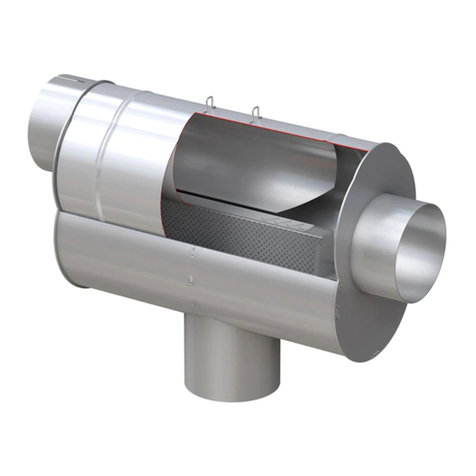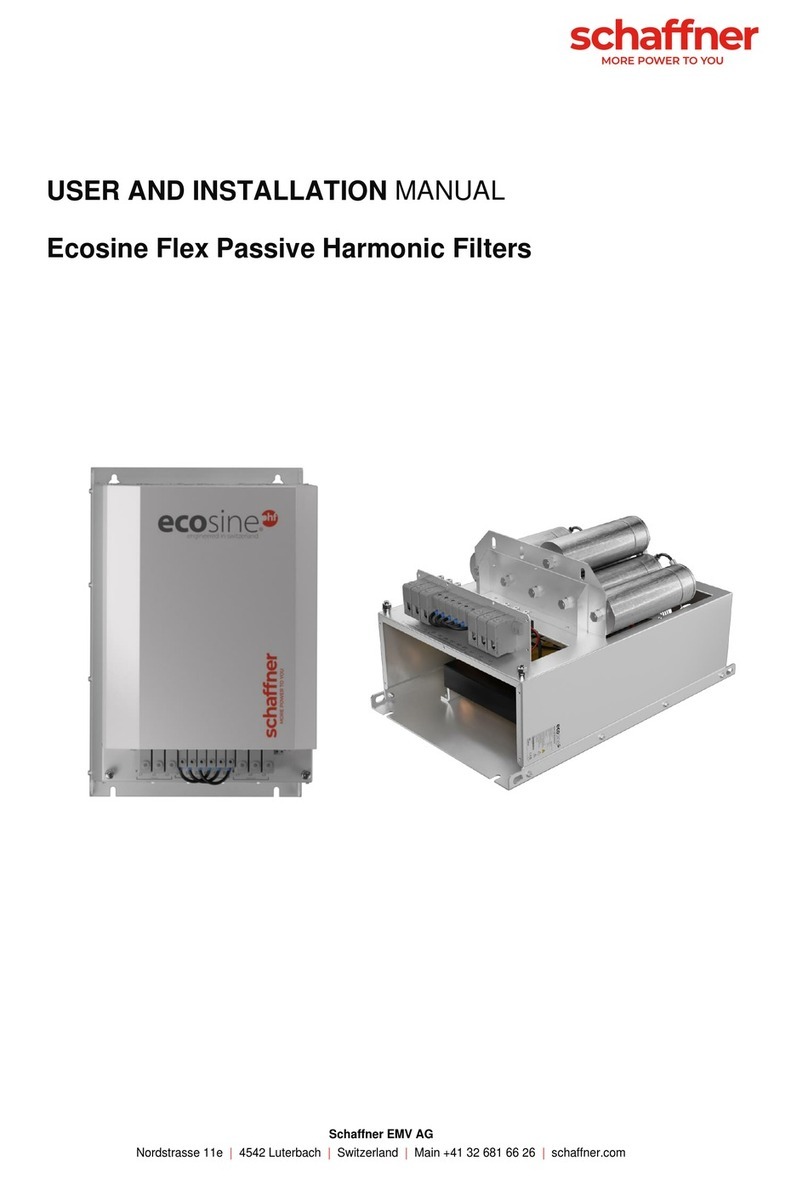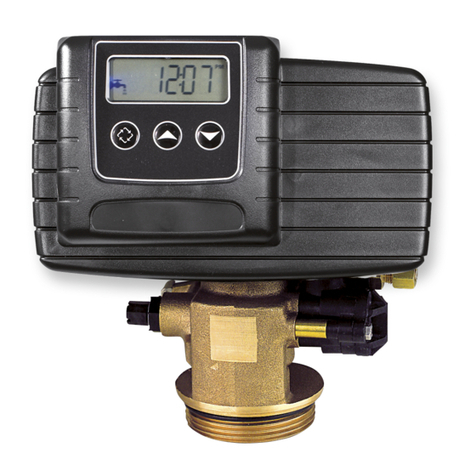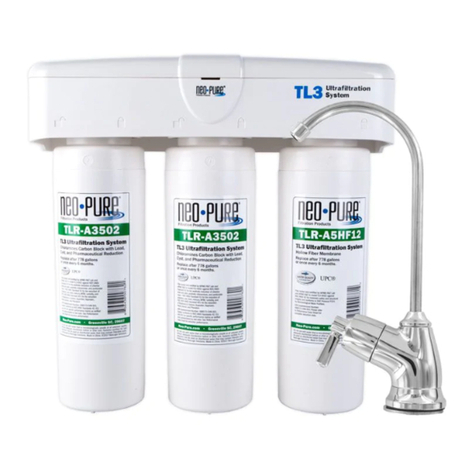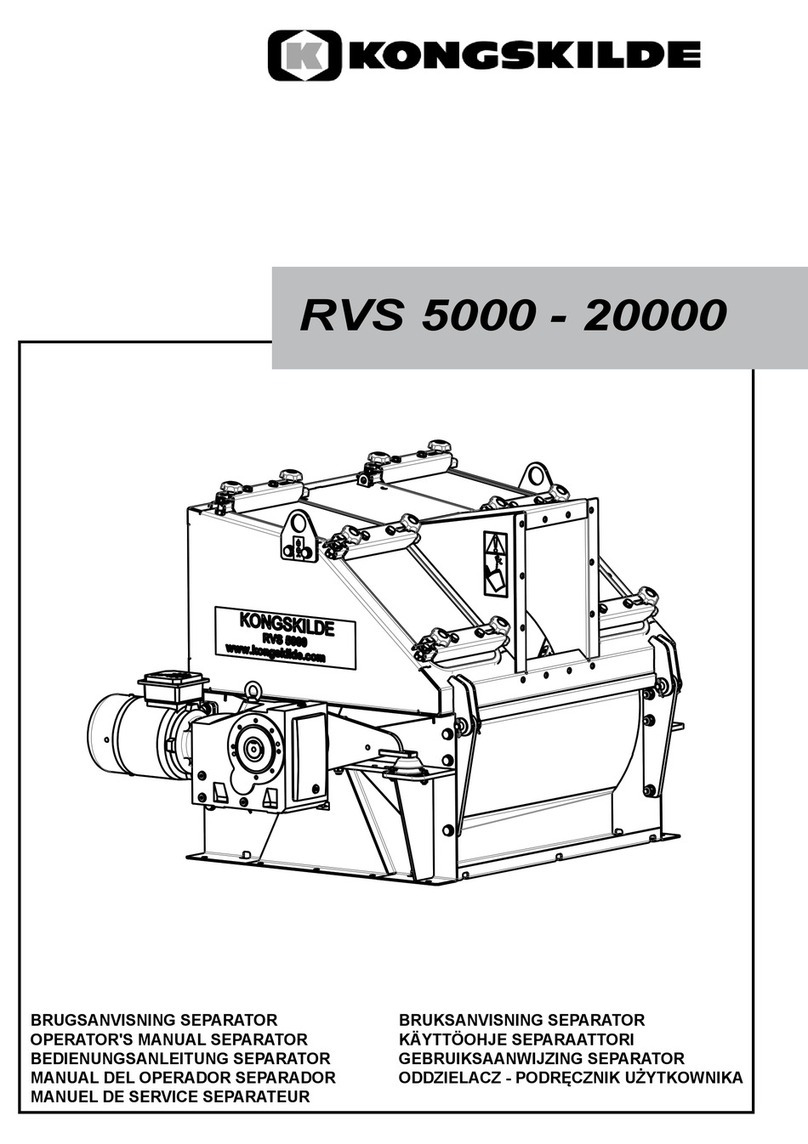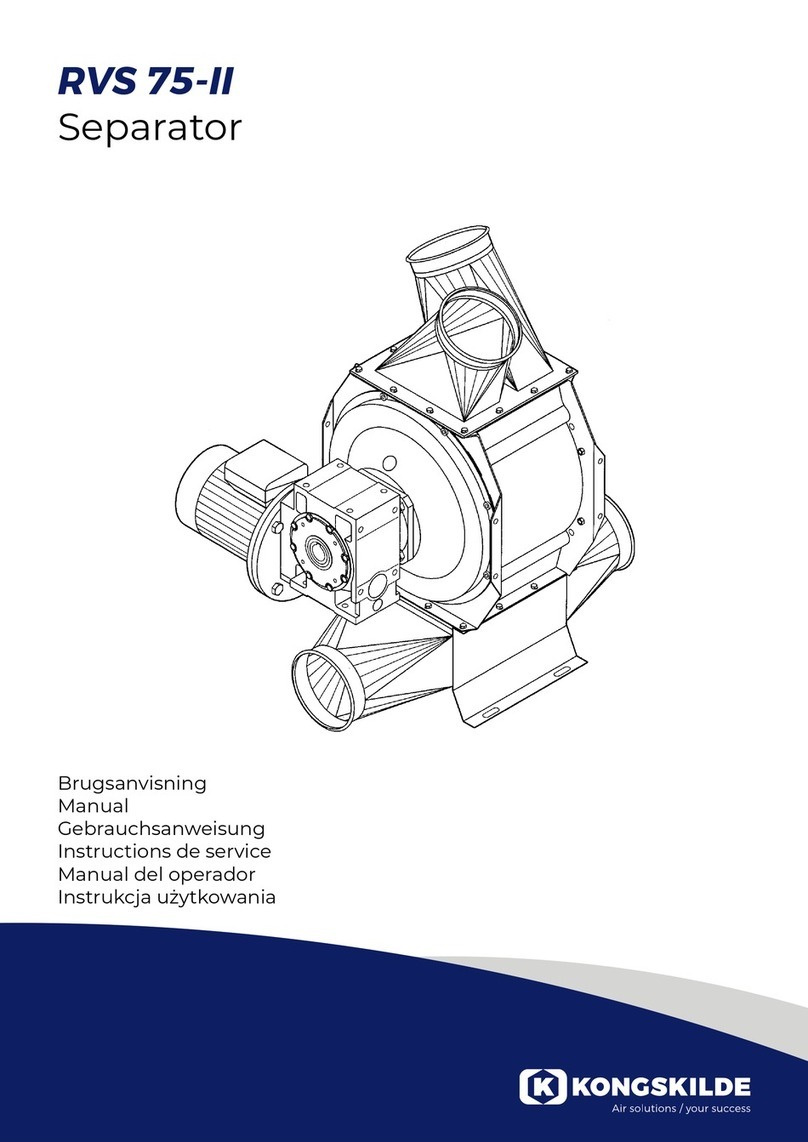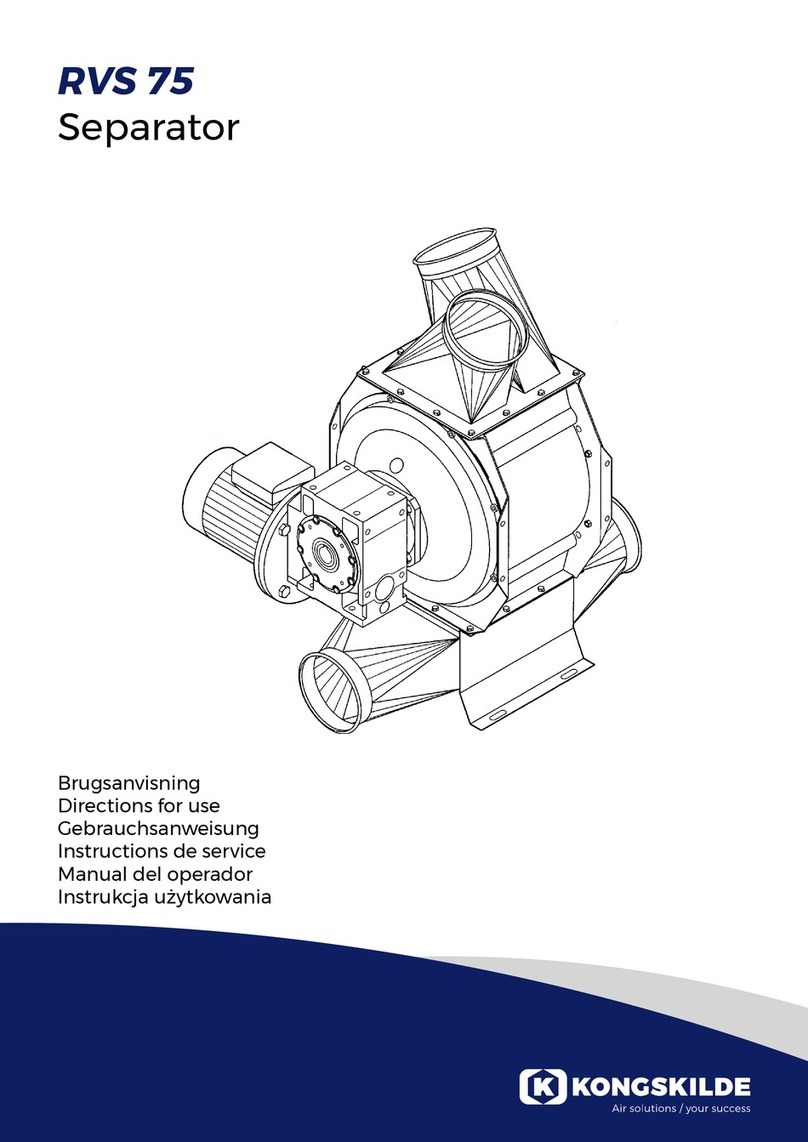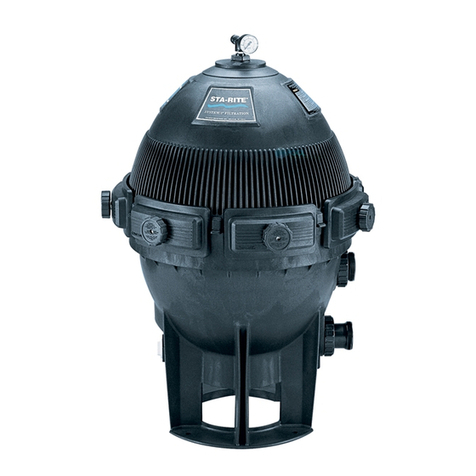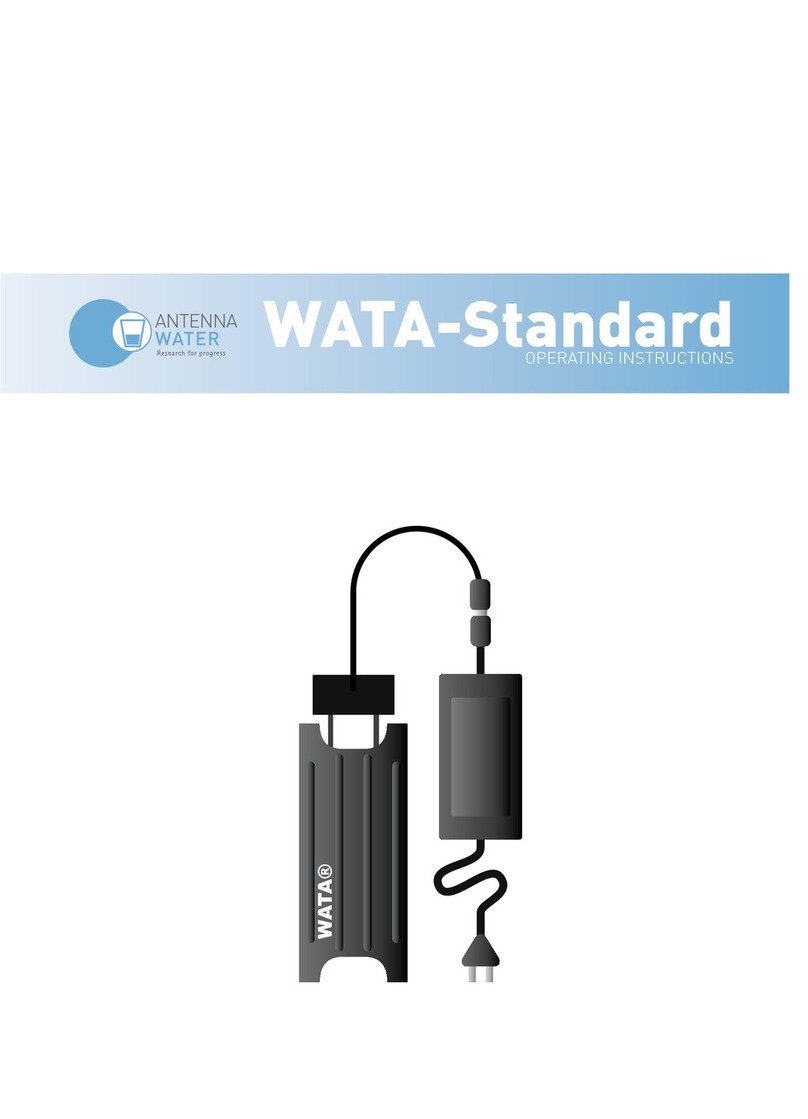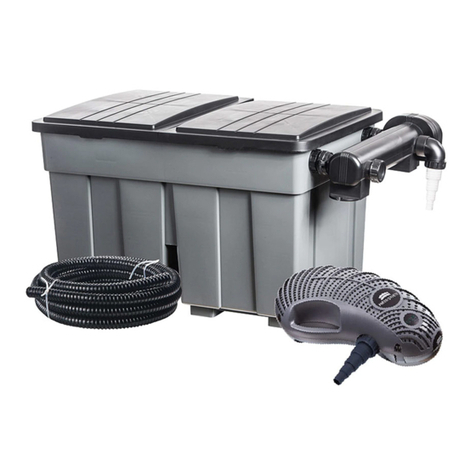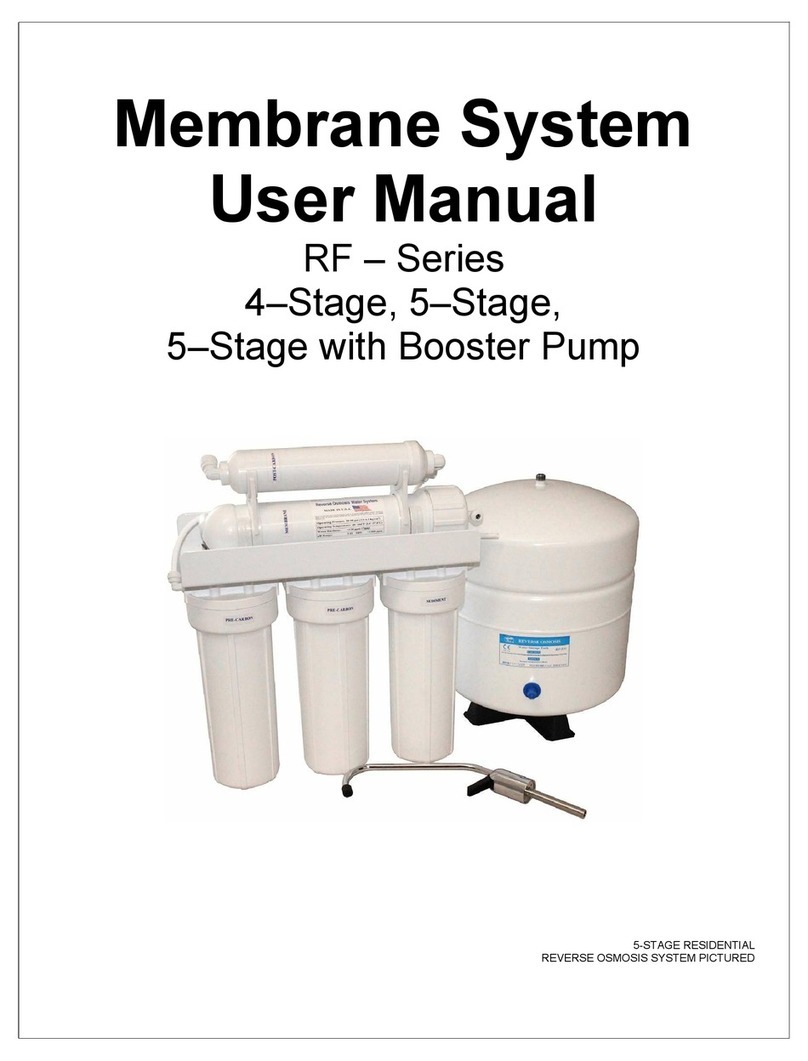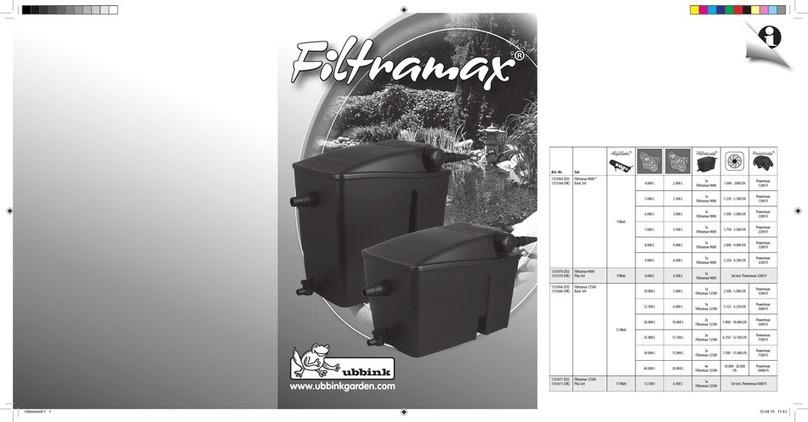
3
Warning notes:
Avoid accidents by always following the safety instruc-
tions given in the user manual and on the safety signs
located on the separator.
The separator must be installed in a closed duct sys-
tem, without access to rotating parts..
Any foreign objects allowed into the system, intention-
ally or unintentionally, may eventually damage the
separator.
Lack of supervision of the separator can result in wear
and/or damage to vital parts, see section "Service and
maintenance".
Due to friction, there will be transferred heat to the
outer casing of the separator during operation, which
will cause the casing to become hot by touch.
The mounting of the separator must be as prescribed, if
not, stability is reduced and wear and tear increased.
Ensure that all guards are intact and properly secured
during operation.
Always disconnect electricity to the separator prior to
repair and maintenance. The safety switch must be
switched o and locked to ensure, that the separator
cannot be started by mistake.
At any time prevent foreign bodies from being sucked
into the connected piping system - any metallic object
could cause sparks to be generated inside the sepa-
rator, with risk of dust explosion. Accordingly, avoid
ames or sparks from eg. an angle grinder being
sucked into the piping.
Never put your hand into the separator inlet or outlet
during operation.
The separator should be mounted in an accessible
location for maintenance. The working area around the
separator should be clear and trip free when carrying
out maintenance.
Make sure that there is adequate lighting when working
on the separator.
In cases where is it necessary to remove material
blocking the rotation, the safety switch must always be
switched o and locked in order to prevent start up of
the separator. If removal of material in the separator is
done while the power is switched on, the separator will
start as soon as the blocking material is removed. This
involves great risk of personal injuries!
In case of abnormal vibrations or noise, stop the sepa-
rator immediately and examine the cause. In case of
doubt, skilled assistance must be called in for repair
and maintenance.
Take care that the separator is securely installed, onto
a stable and at surface, a to avoid falling down and
tipping over.
Use eye protection when working close to the air outlet
of the separator. In case of small particles in the con-
veyed material, these might be blown from the air out-
let, causing eye damage.
The separator contains rotating parts, that should be
completely inaccessible by hands, unless the separate
lockable start/stop switch has been blocked, or the
separator is not electrically connected.
In case of any person contact with the rotating parts,
there is great risk of personal injury.
To avoid any unintentional contact with rotating parts,
pipes of minimum 800 mm length, with a diameter of
maximum Ø 200 mm must be installed onto the inlet
and outlet connections.
These pipes must be installed with bolt clamps, where
tools are necessary for dismantling.
In case it is not possible to use minimum 800 mm
tubes, it must be insured that there within minimum
800 mm from the separator are used bolt clamps,
where tools are necessary for dismantling.
The reason for this is, that according to EU-directive
2006/42/EC (Machinery Directive), it is not allowed for
any unauthorized personnel to gain access to rotating
parts. In case quick couplings are used, unautorized
personnel could dismantle the tubing, and have access
to rotating parts.
It is equally important, that the separator´s material
outlet is secured against access to the rotating parts.
There must be a vertical minimum distance of 2,7 me-
ters from the bottom of the container to the rotor, ac-
cording to DS/EN ISO 13857 : 2008 (Safety distances
to prevent hazard zones being reached by upper and
lower limbs), in order to avoid contact with the rotor
during operation. Thus, the separator must not be con-
nected before it is properly mounted on eg. a compac-
tor or a container.
Also note the risk of squeezing ngers, eg. between
gear motor torque arm / rubber bushing and xing to
the bottom of the separator. Likewise, there is a risk
of squeezing between the top and bottom eg. when
replacing rubber blades or by touching the separator
bearings during operation.
